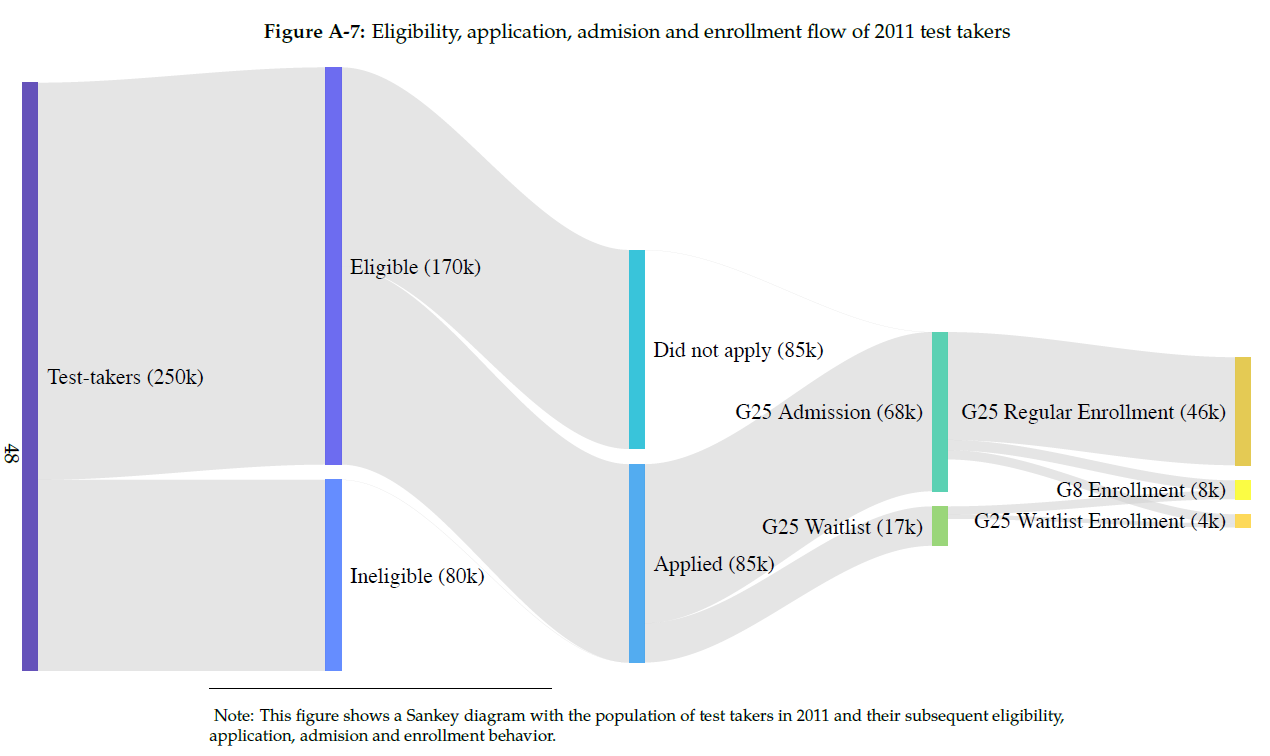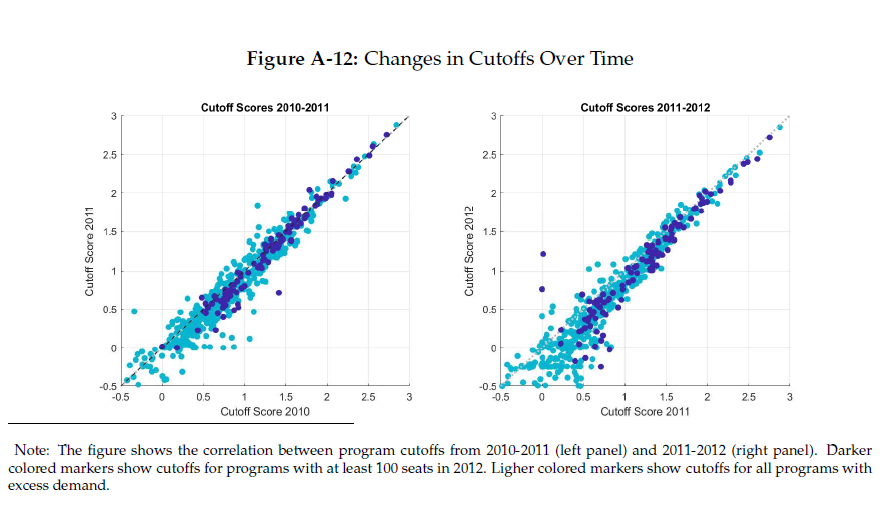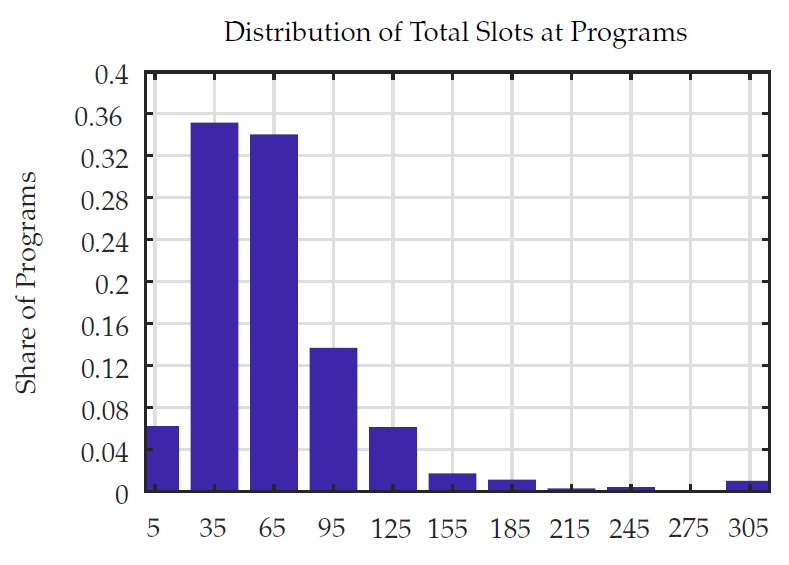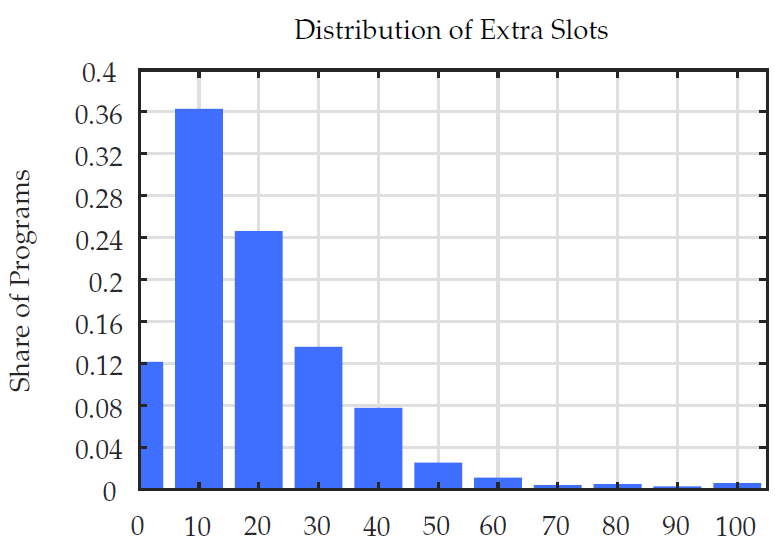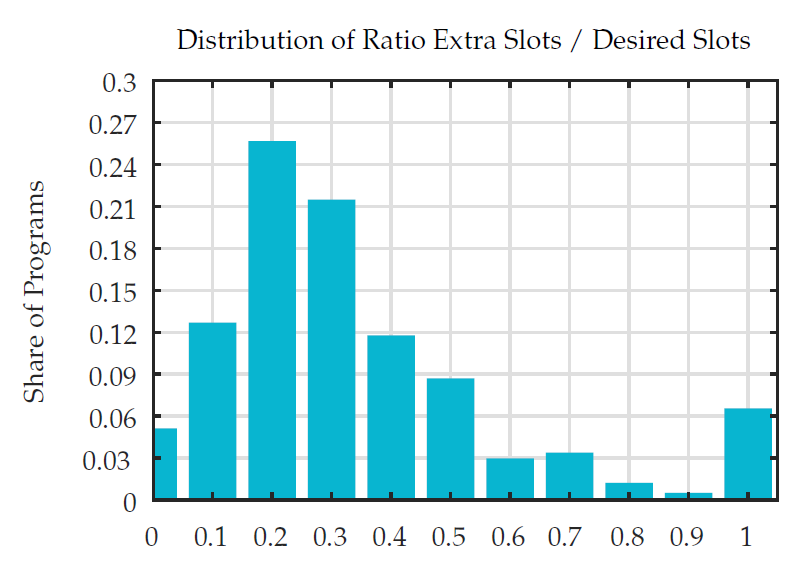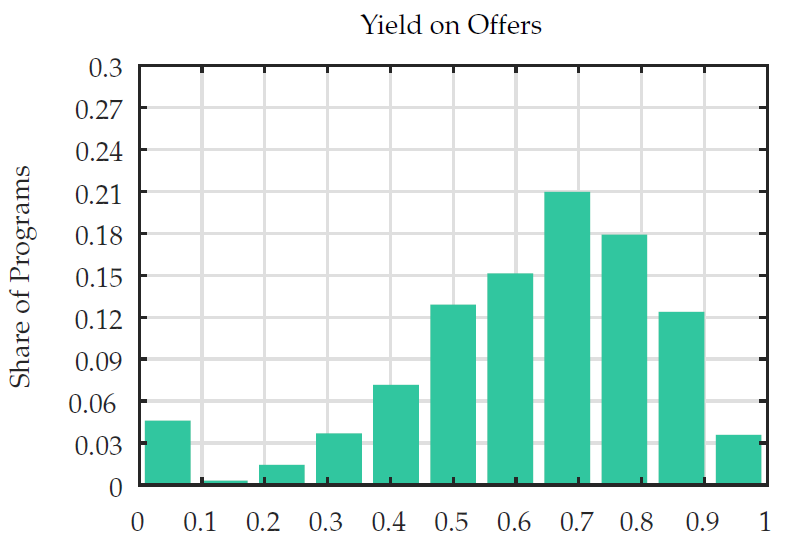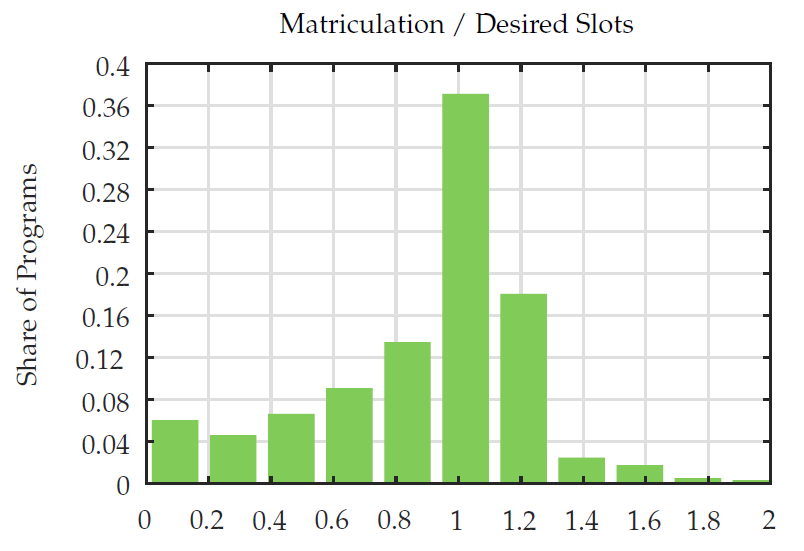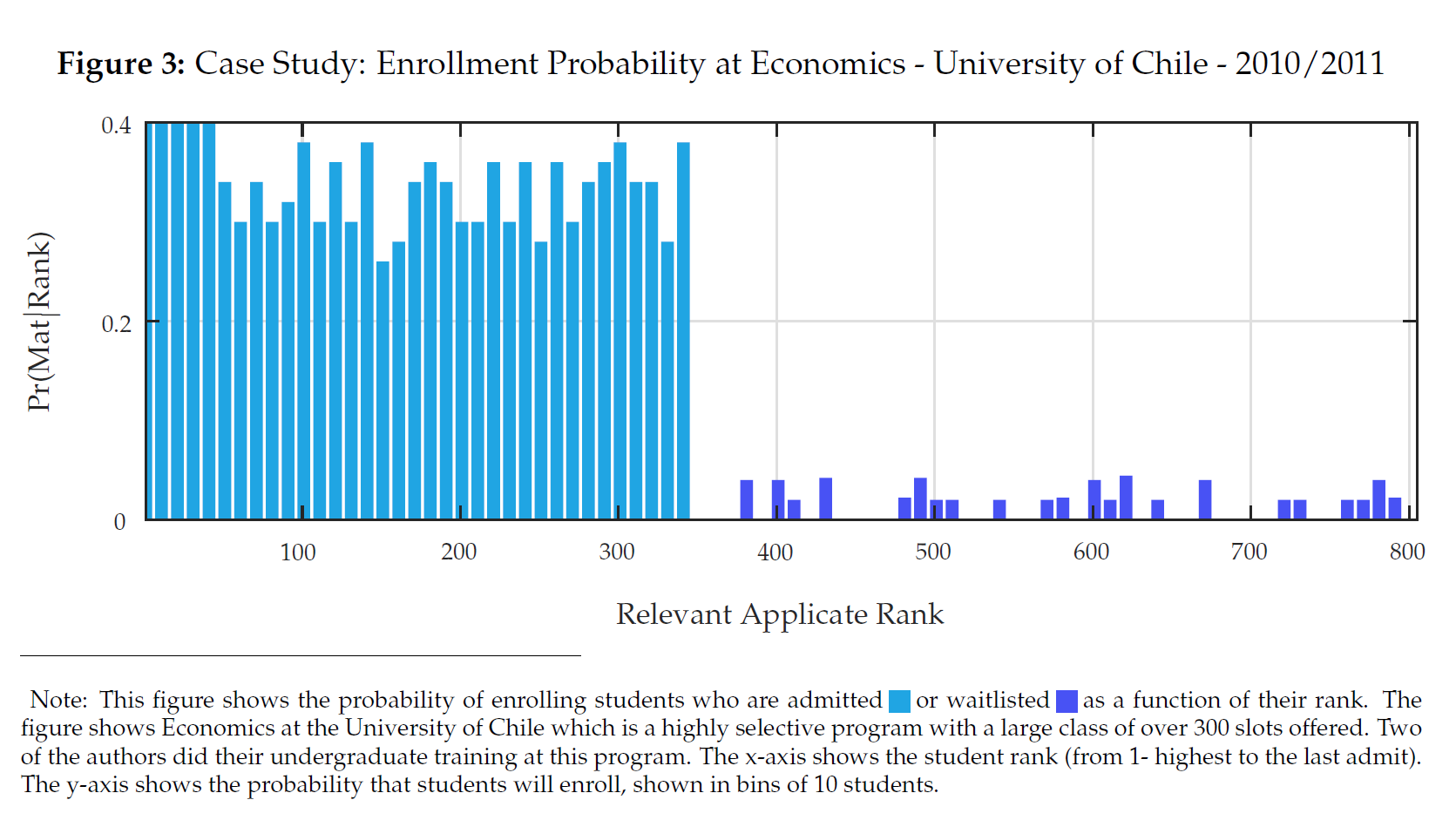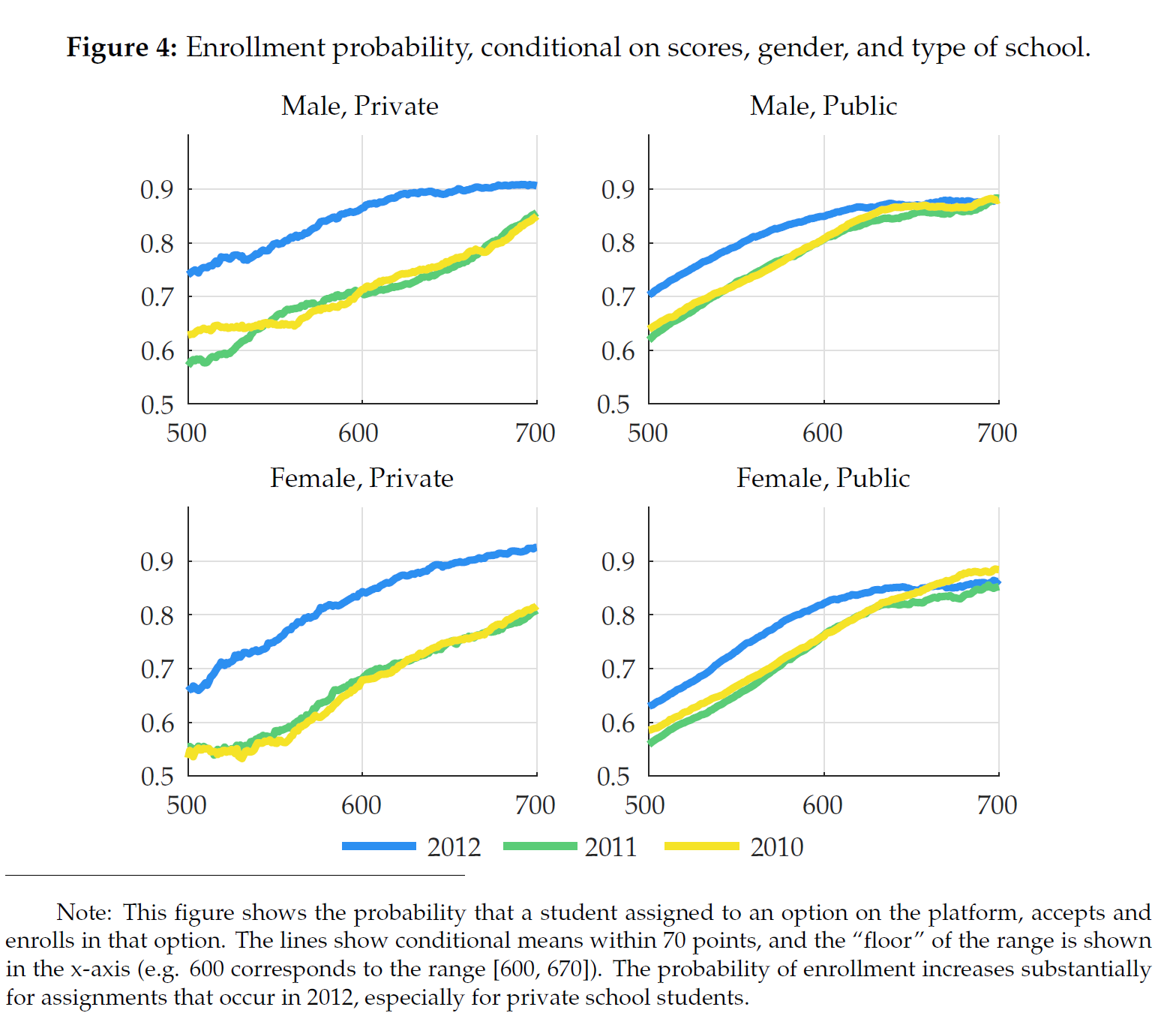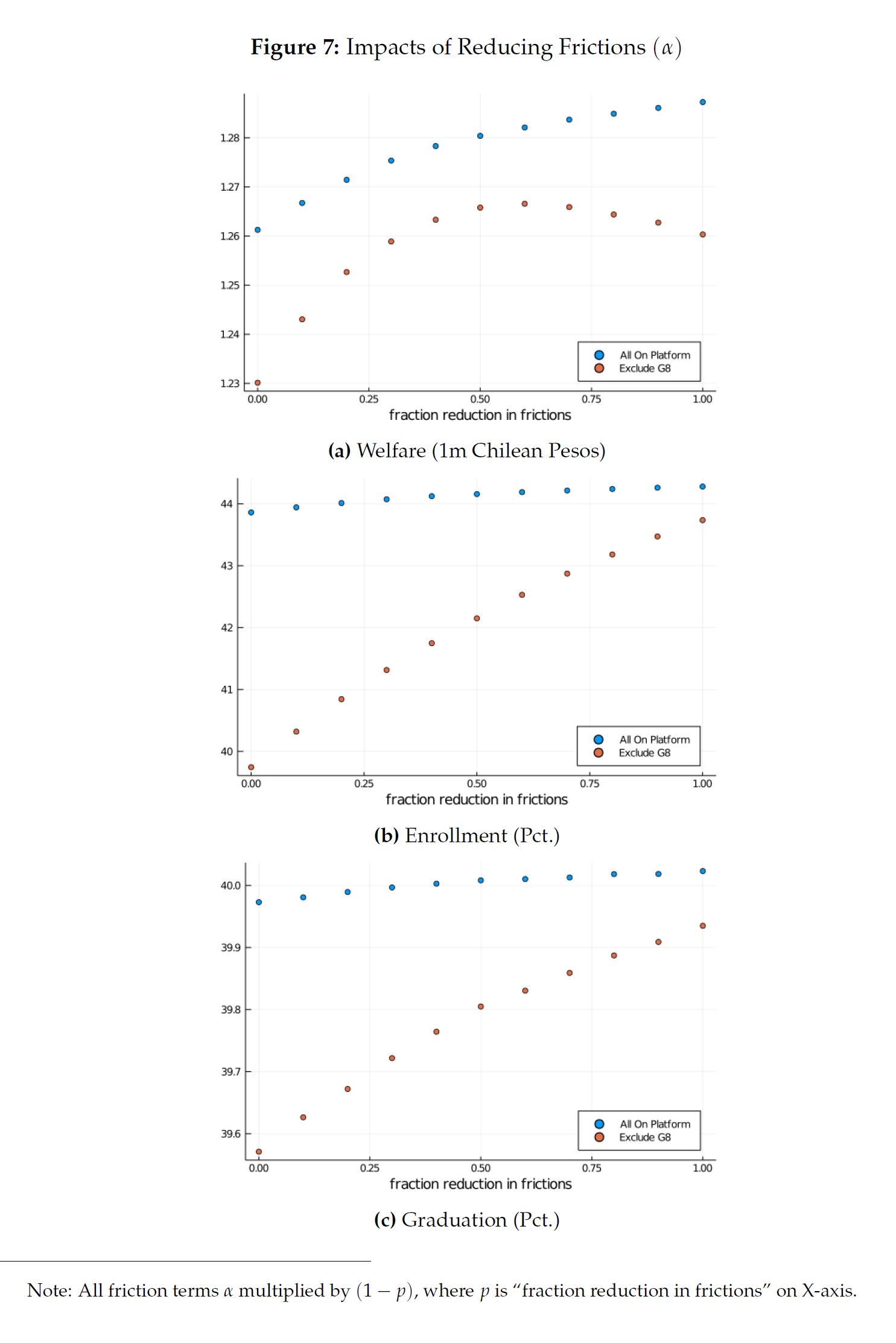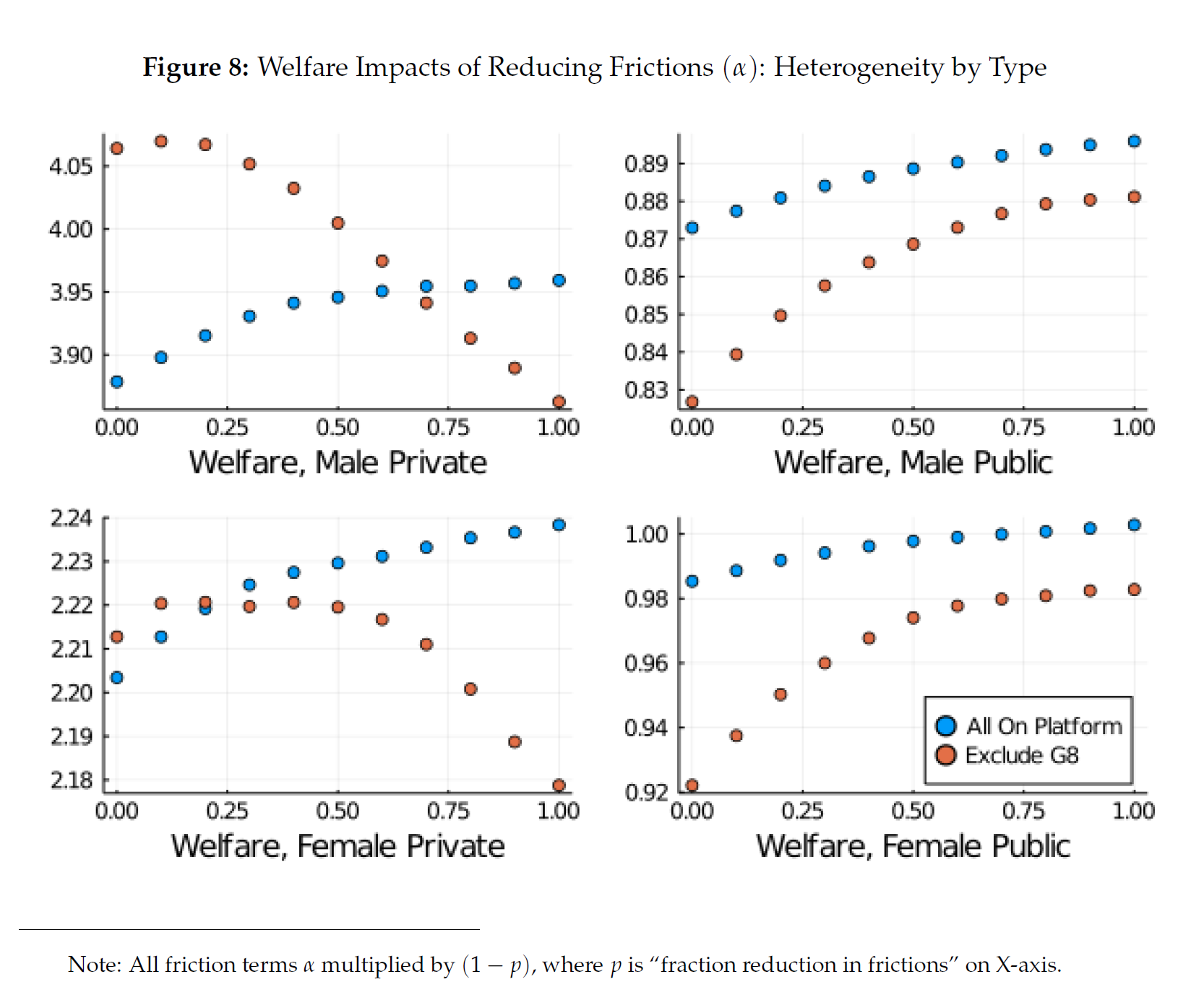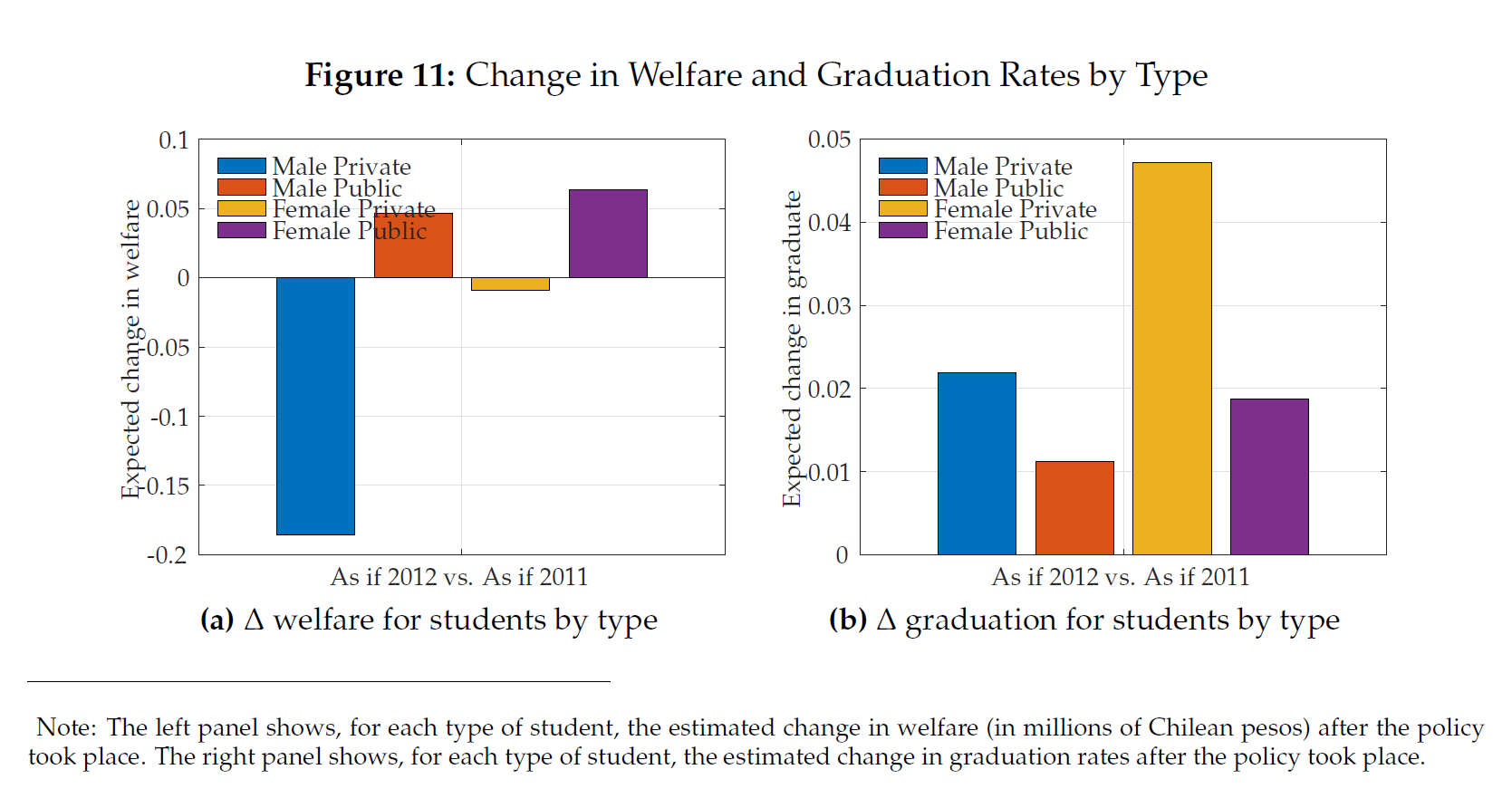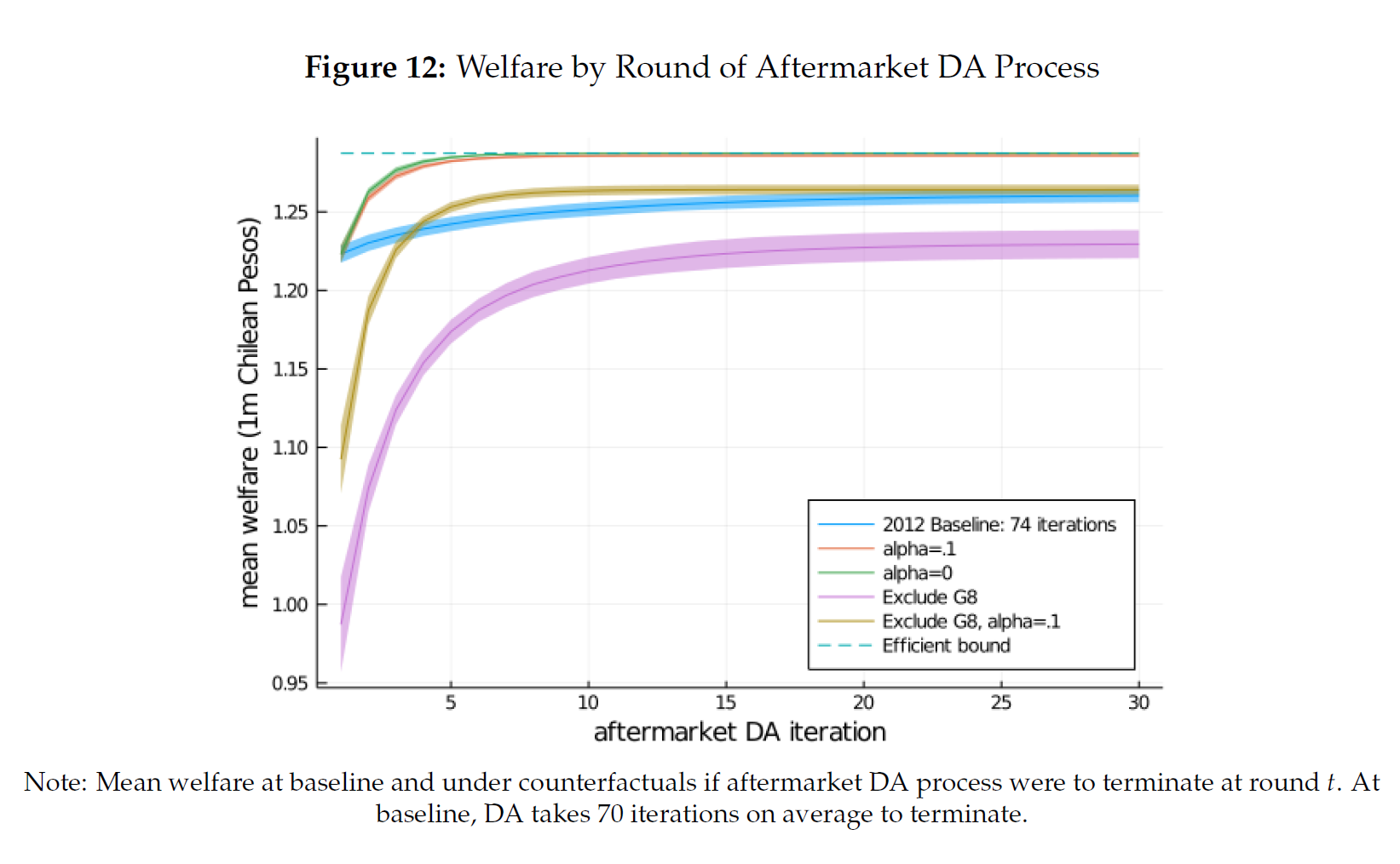Aftermarket Frictions and the Cost of Off-Platform Options in Centralized Assignment Mechanisms
Abstract
We study the welfare and human capital impacts of colleges' (non)participation in Chile's centralized higher-education platform, leveraging administrative data and two policy changes: the introduction of a large scholarship program and the inclusion of additional institutions, which raised the number of on-platform slots by approximately 40%. We first show that the expansion of the platform raised on-time graduation rates. We then develop and estimate a model of college applications, offers, wait lists, matriculation, and graduation. When the platform expands, welfare increases, and welfare, enrollment, and graduation rates are less sensitive to off-platform frictions. Gains are larger for students from lower-socioeconomic-status backgrounds.
Figures From the Paper
- Coauthors: Adam Kapor and Mohit Karnani
- Published: Journal of Political Economy (July 2024)
- Date: 2024-07-01
